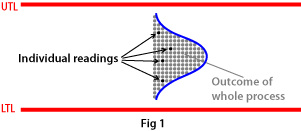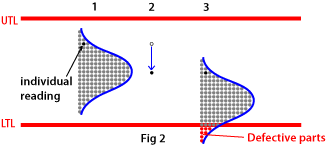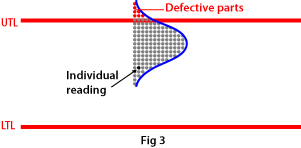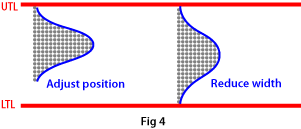A brief history of SPC
We must go back almost 90 years, to 1923 when Walter Shewart discovered a way to distinguish between common and special causes of variation in a process. His method is now called statistical process control (SPC).
Common cause variation
Shewart realised that we must learn to live with and accept the random common causes that occur in manufacturing. These common causes together form a dispersion pattern that describes the outcome of the process.

Even more important, Shewart understood the danger of reacting to, and acting upon, individual readings of these common causes (see Fig. 1).
Two common scenarios
Individual sample readings do not show the whole process, which can lead us to draw wrong conclusions.
In Fig. 2 we happen to measure a part (1) which lies fairly close to the upper tolerance limit (UTL). We adjust the process accordingly (2) and thereby, all unwittingly and with the best of intentions, move the whole process so that it occasionally produces defective parts (3).

In the reverse case we happen to measure a part that lies near the middle of the tolerance range. In the belief that this reading is representative of the whole process, we make no adjustments.

What we do not know is that the whole process is badly off-centre and that we are sometimes, between our spot-check samples, producing defective parts (see Fig. 3).
Special cause variation
Only if the position or spread of the process outcome has changed do we have cause to react and make adjustments. These changes are called special causes (see Fig. 4).

See the whole forest, not just one tree
Using statistical process control means that instead of checking individual parts and comparing them with the tolerance limits, we get a general overview of our whole process.
Statistical process control lets the company control quality where it is created – at source. The process is controlled at the right time, for the right reasons and towards the right objectives. Everybody wins: the operator has better control of the process, there are fewer rejects, and customers are much more satisfied.




